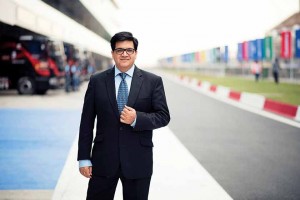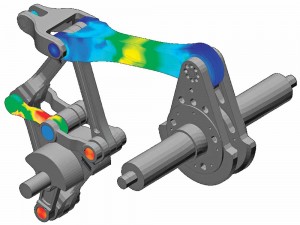Interview by: Ashish Bhatia
CV info-tech
Q. How are Tata technologies using knowledge-based Information Technology (IT) for its clients?
A. Knowledge-based IT engineering systems automate the elements of the design process which substantially reduce anything that is repetitive engineering, into the design options that can be used throughout the process. Consider our involvement with Tata Motors for their CVs for example, and the knowledge-based IT engineering systems would help with the design of wind shield; how much swept area it should have, and if it is a legitimate rear view mirror when you place it in a concept vehicle. There are many such elements of the design process that the knowledge-based IT systems can help to get right the first time around. The concepts invariably find use in commercial vehicles, and one such example is the Tata Prima. Knowledge-based IT systems don’t just end upon attaining cycle time reductions; they travel much beyond. You could use them for attaining important goals such as light-weighting. Light-weighting is a big focus area in automobiles. We are leveraging our experience in knowledge-based IT systems to make inroads into light-weighting. The other knowledge bases that we are leveraging are in the area of hybridisation and electrification of vehicles. We are involved in the development of numerous Electric Vehicles (EVs) and hybrid vehicles across the globe. There resides a lot with us as a company in the form of systems, and in the form of people. We capture the potential, and the aspect of learning is continuous. Consider connected vehicles, and this aspect assumes importance. In terms of how the driver is driving the truck; if he is using it effectively, efficiently and most importantly if he is driving it safely. All the big data that is collected can be brought back in to use. There are a lot of ways to go about it in terms of technology options, both in terms of core engineering, drive-ability and connected vehicles, as well as in hybridisation.
Q. Is telematics a part of the work you do. How important is the integration of such a product or system in case of CVs?
A. Telematics, for us, is about off-vehicle integration. It is very relevant, and if you look at fleet operators running multiple trucks, telematics is the best option to be able to optimise components, fuel efficiency, and efficiency of the drivers. It’s a matter of Original Equipment Manufacturers (OEMs) determining a strategy. It is a matter of OEMs making their telematics product offering commercially viable. The big question is, the applications to be integrated during the development of telematics, and the time the product should be made available in the market. If the product should be piloted with some dealers or truck companies first is the prerogative of the OEM. Also, if it should be provided as a standard fitting or as an option. For Tata Technologies, the task is to provide the requisite technological back up.
Q. How difficult or easy it is to strike a balance between knowledge-based systems and frugal engineering?
A. The bottom line, I think, is in understanding the need of the customer. You may not want to apply light weight, connected or autonomous vehicles if there is no requirement for them. We have, for example, developed a concept of ‘right-weighting’, ‘right-performance’ and ‘responsible use of engineering’. These, we apply in markets as per their demands. The point is, we will build Centres of Excellence (COE), but their success lies in their application as a business model. The challenge is in building COEs that are effective and can align and understand the customer’s strategy. Our business model is all about partnering with our customers. It is about working with them to fulfil the road-maps they have planned.
Q. Could you elaborate on the concept of COEs please?
A. Over time we expect different COEs to evolve. We are looking at re-organising our engineering teams. Earlier the teams were split into programs and territories. These will now be replaced by COEs. We are building powertrain and lightweighting competences, and the COEs are distributed across regions. Powertrain, for example, is concentrated in Romania. Lightweighting COE is based at Coventry in UK. The tear-down benchmarking takes place in Pune. Considering our business model, which is about partnering with our customers, in the EV space, we are working with the Chinese. In the top-hat space we are working with Swedish and American companies. All this involves an amount of cross-fertilisation of learnings from across the globe. The frugality concepts that we have put in place have been adopted across the globe. Vice Versa, we are bringing in light weighting, hybridisation, dual-fuel systems and alternative propulsion systems to the domestic market.
Q. What is the tear-down expertise all about?
A. We are building a large shed at Pune, which would be used to tear-down products of competitors. These would be not just industrial products but will also include commercial products. With time we hope to build an extensive database, which would enable us to turn consultants to OEMs. That, we think, will be a real differentiator over time.
Q.How do you look at your partnership with Tata Motors evolving over time?
A. Our partnership with Tata Motors has come a long way. It has constantly evolved over time. We have recently signed a five-year contract with Tata Motors called ‘i-sourcing’. Earlier we used to provide Tata Motors with just a team of engineers and address problems concerning product development. Such a practice is today capable of being termed as irresponsible use of engineering. We have therefore formed teams where our engineers are now playing the role of execution partners for Tata Motors. It goes like this: Tata Motors determines the strategy and we execute it. A system called nine-blocker that we have constructed helps to carry out different tasks across body engineering, chassis systems, powertrain, and electronics with Tata Motors. This is done in the form of a work package. Teams have higher accountability and the processes are streamlined. It is quite path breaking to have 1,200 to 1,400 engineers work meticulously. This is a collaborative outsourced model where Tata Motors can keep a track of engineering hours put in on tasks, and allows for constant improvisation.





















